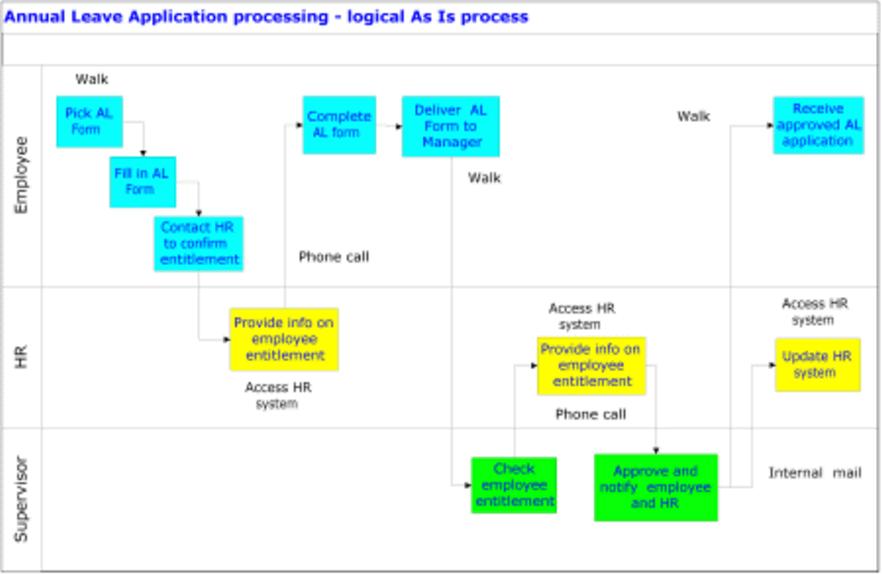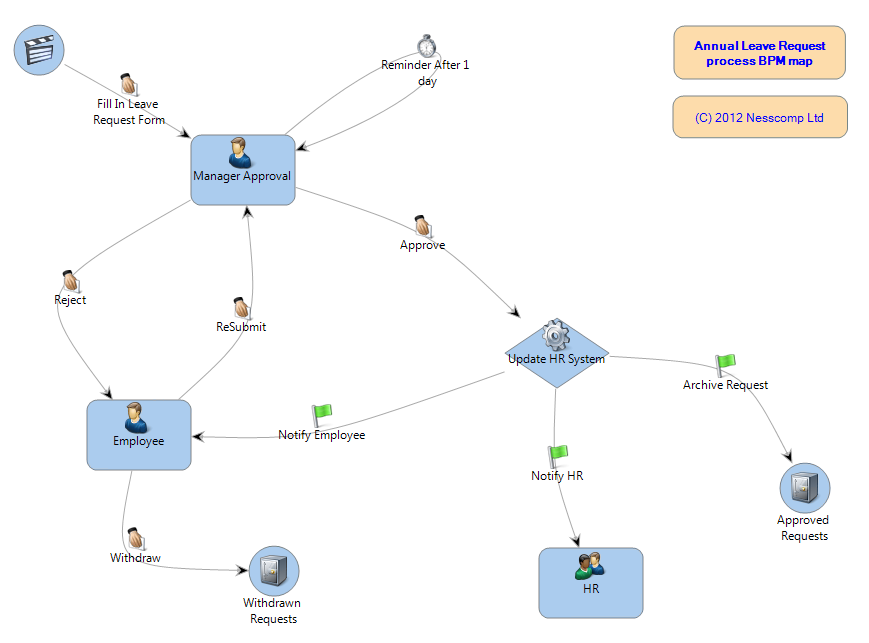£1mln per year saved on leave request processing
when a large company reduced the time spent by employees on submitting and processing annual leave requests by 50%.
Applying for annual leave is one of those administrative processes that involve all the employees in every organization. For larger companies it means thousands and thousands of unproductive activities costing employees time and the company millions of pounds.
A large, multinational organization decided to reduce the effort required by the employees to apply for and process annual leave requests.
The problem
Applying for annual leave is one of those administrative processes that involve all the employees in every organization. For larger companies it means thousands and thousands of unproductive activities costing employees time and the company millions of pounds. (P)
A large, multinational organization decided to reduce the effort required by the employees to apply for and process annual leave requests.
The existing process is shown below:
It was characterized by:
- Numerous manual activities (obtaining forms, delivering forms by hand, posting through internal mail, checking systems)
- Redundant activities (HR clerk needs to provide the same information twice)
- Unnecessary involvement of people (HR clerk)
- Potential for time wasting (unanswered calls)
- Lack of support for decision making (the manager can not see the leave requirements of the whole team)
The solution
A solution built with the BPM platform resulted in a much simpler process:
The Annual Leave Application form is now available electronically. The employee fills in the form and sends it to the To Do box of his manager. The employee does not have to inquire about the progress directly with the manager as he can see what is happening with the request via his own Watch facility.
Thanks to the integration with the HR System there is now no need to involve HR clerks to provide the current leave balance. The information relevant to the employee is provided directly on the form. The same applies to the manager when he approves the application.
Electronic routing of the application form also facilitates a dispute if the manager does not want to approve the proposed leave. The whole track record of such dispute is maintained for any future reference.
Built-in, time based reminding functions are used to provide a better control of the process.
Improvements and Benefits
Actual effort required to process annual leave reduced by 1.5hr. Elimination of manual activities and streamlining of the process saved on average 1.5hr (between all the people involved) per each instance of leave application processing.
Projected savings: £1mln per year. It is estimated that the reduction of time used to process leave applications and resulting better utilisation of staff will achieve an approximate saving of £50 per each transaction. This in turn will produce overall savings of around £1mln per year (4 transactions per year, 5000 employees) for the whole company.
The system will pay for itself within the first year. The cost of implementing the BPMS system (server, development, licenses for 5000 seats and various other fees) was upwards of £350,000. Yet with all the projected savings it is expected that the investment will be fully returned within the first year.
The HR system securely made available to employees. One of the main obstacles to speeding up administrative processes is lack of direct access to the relevant systems by the employees (e.g. HR System). This restriction is caused by the fact that such access could compromise confidentiality of information. It would also be very expensive to buy licences for every employee in the company. Integration through BPMS platform overcomes this obstacle. It only allows the employee to view his own information.
Reduced cost of future improvements. Due to the way the BPMS platform is licensed, the cost of purchasing of 5000 licenses (about 75% of the total cost) is only incurred once. Therefore, cost of future extension of the system to cover other administrative processes (and possibly achieving similar savings) will be significantly lower.


